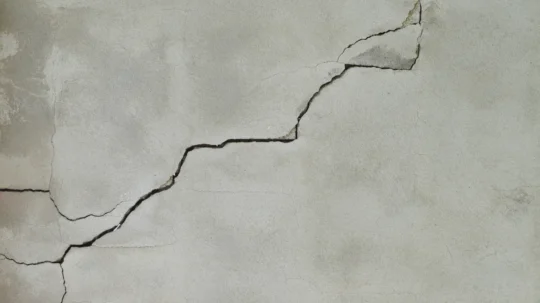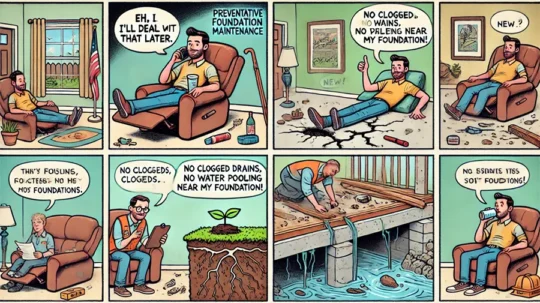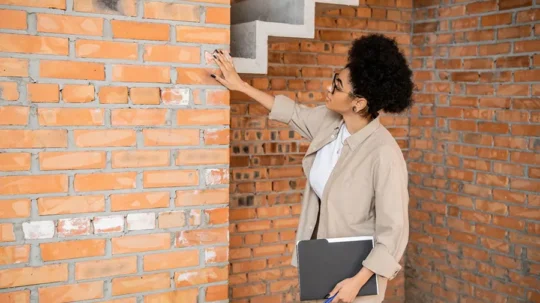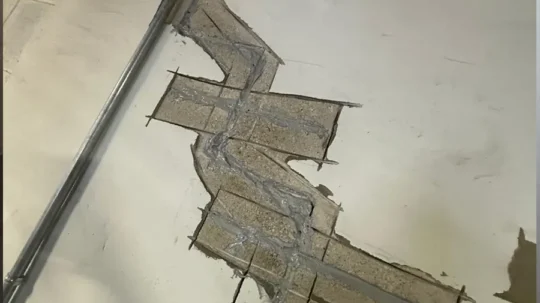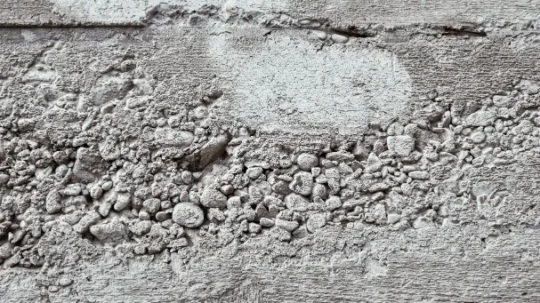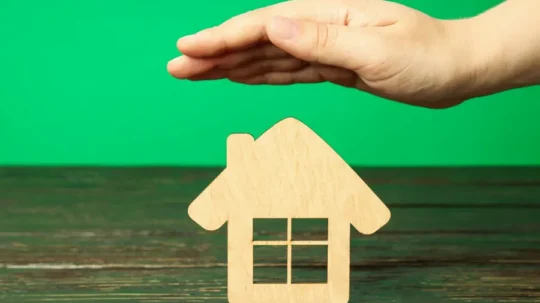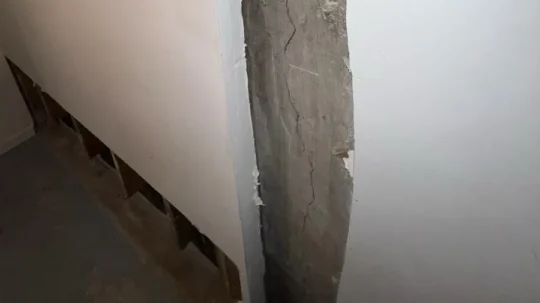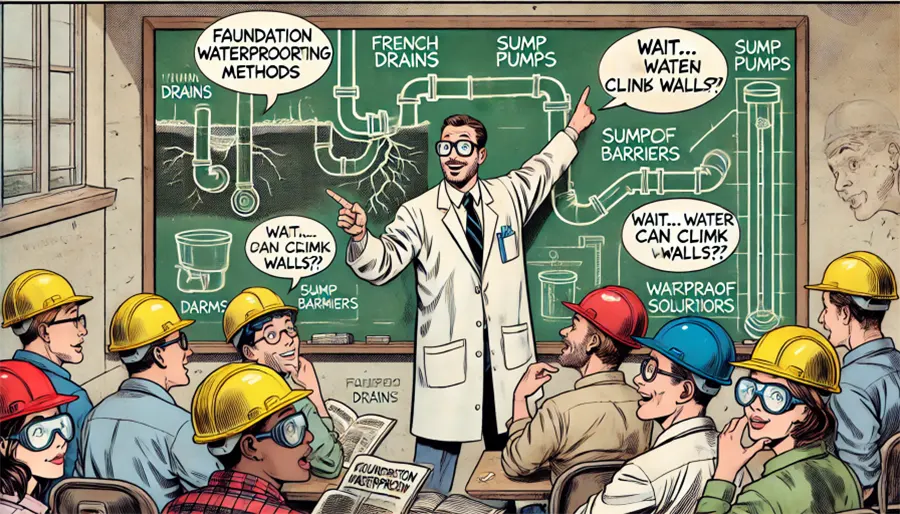
Foundation waterproofing prevents water damage, leaks, and structural issues. Without it, moisture can seep in, causing cracks, mold, and costly repairs. This guide covers all of the best waterproofing sealants, membranes, and drainage solutions to keep your foundation dry and stable.
Moisture Problems in Long Island, Brooklyn, or Queens, NY? Stop Moisture in Its Tracks—Explore Waterproofing Solutions Today!
Why Foundation Waterproofing Matters
Foundation waterproofing is a proactive step in preventing water intrusion, which can lead to costly structural issues over time. Excess moisture doesn’t just weaken the foundation—it creates an environment for mold, mildew, and other serious problems.
The Dangers of Water Intrusion:
- Structural Damage – Water weakens concrete over time, causing cracks, shifting, and foundation settlement.
- Mold & Mildew Growth – Persistent moisture promotes mold, which reduces indoor air quality and poses health risks.
- Increased Repair Costs – What starts as minor basement waterproofing issues can turn into expensive structural repairs if left untreated.
Proper foundation waterproofing methods help prevent these risks, protecting your home’s value and stability.
Stop Water Damage Before It Starts—Get a Waterproofing Assessment Today!
When to Call an Expert for Foundation Waterproofing
While some minor waterproofing measures can be DIY-friendly, serious foundation moisture problems require professional intervention. Ignoring these issues can lead to structural weakening, mold growth, and costly repairs.
Signs You Need a Waterproofing Contractor
- Persistent Leaks: Persistent leaks or basement flooding – If water continues to enter despite DIY efforts, professional drainage solutions may be needed.
- Visible Cracks: Expanding foundation cracks – Widening or spreading cracks can signal serious foundation instability.
- Musty Odors: Musty odors or visible mold – A persistent damp smell or mold growth indicates excess humidity and poor ventilation.
- Standing Water: Drainage issues leading to pooling water – Standing water around the foundation can cause long-term structural damage. Check out our blog on How to Direct Water Away from Your Foundation to learn how to protect your home from water damage.
Hiring an experienced waterproofing contractor ensures that the right solution is applied to protect your home for the long term.
Interior Foundation Waterproofing Methods
Interior foundation waterproofing solutions help manage moisture that has already entered the basement or crawl space, preventing further damage. These methods do not stop water from reaching the foundation but are effective in redirecting or controlling indoor moisture.
Common Interior Foundation Waterproofing Solutions:
- Perimeter Drains – Installed along the basement floor’s interior perimeter to collect and redirect water.
- French Drains – A specialized drainage system that channels water to a sump pump, keeping basements dry.
- Sump Pumps: Automatically pump accumulated water out of the basement, preventing flooding and standing water.
- Waterproof Coatings and Sealants: Applied to basement walls to reduce moisture seepage through small cracks.
- Dehumidifiers and Vapor Barriers: Control humidity levels, reduce condensation, and prevent mold growth in crawl spaces and basements.
While interior foundation waterproofing provides effective moisture control, it does not stop water from reaching foundation walls. For long-term protection, exterior waterproofing methods are often recommended.
Keep Your Basement Dry—Explore Interior Waterproofing Solutions Today!
Exterior Foundation Waterproofing Methods
Exterior waterproofing solutions are designed to stop water at its source, protecting your foundation from persistent moisture problems. These methods prevent water from seeping into foundation walls, providing long-term protection against basement water damage.
Key Exterior Foundation Waterproofing Techniques:
- Waterproofing Membranes – Applied to exterior foundation walls to create a moisture barrier, preventing water penetration.
- Exterior Drainage Systems – French drains and weeping tiles direct water away from the foundation, reducing hydrostatic pressure.
- Foundation Excavation & Sealants – Involves digging around the foundation to apply waterproof coatings and install drainage solutions.
- Grading & Landscaping Adjustments – Ensures proper slope around the home, directing rainwater away from the foundation.
While exterior waterproofing is more labor-intensive and costly than interior methods, it provides lasting foundation protection and reduces the risk of structural damage.
Comparing Waterproofing Sealants, Membranes, and Drainage Solutions
Different foundation waterproofing methods serve different purposes, from preventing moisture entry to managing existing water problems. Choosing the right solution depends on the severity of water intrusion, foundation type, and long-term goals.
Comparison of Waterproofing Methods
| Method | Function | Best Use Cases |
| Waterproofing Sealants & Coatings | A quick fix for minor leaks and damp walls | Small cracks, surface moisture issues |
| Waterproofing Membranes | Creates a long-term moisture barrier around the foundation | Homes in flood-prone areas, exterior foundation protection |
| Interior Drainage Systems | Manages water that has already entered the basement | Existing basement water issues, minor seepage |
| Exterior Drainage Solutions | Prevents water from reaching the foundation | Areas with poor drainage, high water tables |
While sealants and coatings offer temporary relief, waterproofing membranes and drainage solutions provide long-term moisture control. Homeowners experiencing persistent leaks or structural damage should consider a comprehensive waterproofing approach.
Not Sure Which Waterproofing Method is Right for You? Talk to an Expert Today!
New York Foundation Waterproofing and Code Compliance
Waterproofing isn’t just about protecting your basement—it’s a legal requirement in many areas of New York to prevent structural failure and costly damage. High water tables, frequent storms, and hydrostatic pressure make waterproofing essential for long-term building stability. Ensuring compliance with building codes not only safeguards your home but also helps prevent violations, fines, and expensive repairs.
Building Code Requirements for Waterproofing and Repair
- International Residential Code (IRC R406.2)
- Requires waterproofing for foundation walls in areas with high water tables or severe soil-water conditions.
- Waterproofing must extend from the footing to at least 6 inches below the top of the basement floor.
- Approved materials include polymer-modified asphalt, cement-based coatings, and flexible synthetic rubber.
- New York State Building Code (RCNYS Section R406)
- Mandates waterproofing for concrete and masonry foundations where water intrusion is a known risk.
- Foundation walls must be sealed to prevent leaks that can compromise structural integrity.
- Drainage systems may be required to manage groundwater and prevent hydrostatic pressure buildup.
- New York City Building Code (BC 1805)
- Requires foundation waterproofing for all structures below grade exposed to groundwater.
- Waterproofing must be designed to resist hydrostatic pressure in flood-prone areas.
- Repairs to existing buildings must include waterproofing measures to prevent future damage.
Ignoring waterproofing requirements can lead to structural instability, mold growth, and costly foundation failures. Our team specializes in waterproofing solutions that bring properties up to code while protecting them from future water damage.
Get Your Foundation Dry and Code-Compliant—Schedule an Inspection Today!
Foundation Waterproofing Methods Explained: Final Thoughts
Foundation waterproofing is a crucial investment that protects your home from moisture damage, structural issues, and costly repairs. Whether using waterproofing sealants, membranes, or drainage solutions, taking action early prevents long-term damage.
Water damage can lead to foundation instability, mold growth, and expensive restoration costs. Homeowners who recognize the early warning signs and invest in the right basement waterproofing methods can avoid these risks.
Ensure a Dry, Strong Foundation—Schedule a Waterproofing Inspection Today!


